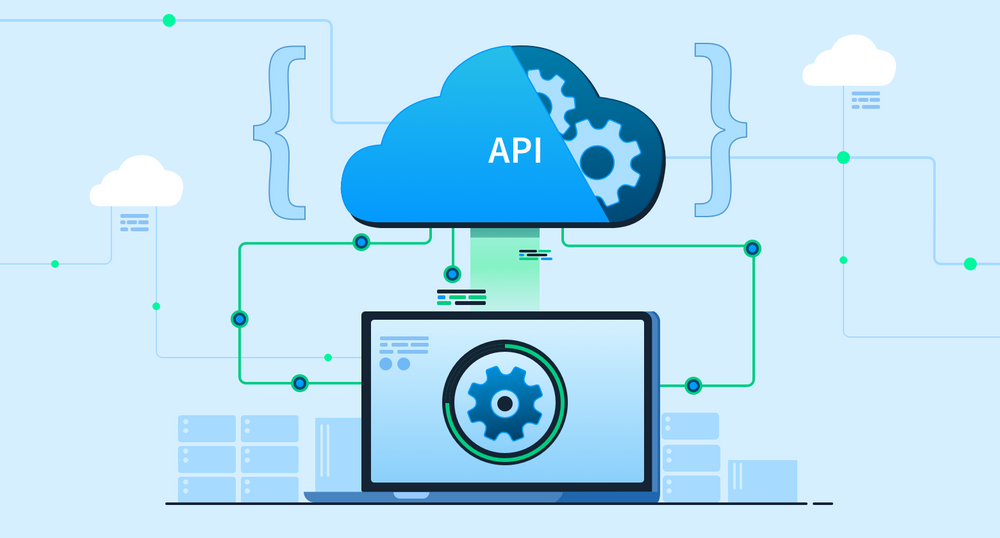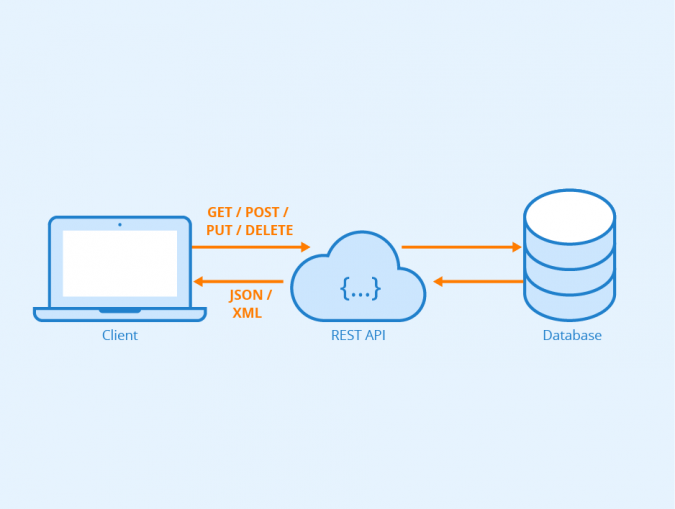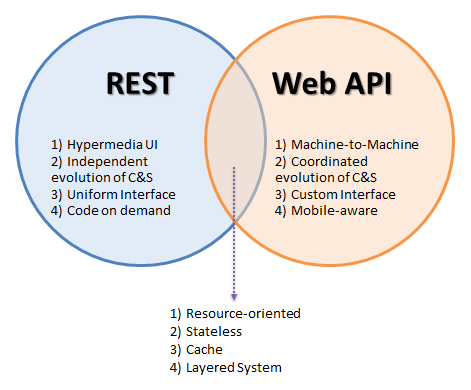Robust software plays a significant role in any organization’s success, but building every product from scratch is tedious and time-consuming. To simplify the process of developing new produNot only does it have the capability to manage high load using an HTTP proxy server but also allows fresh clients to work on desired applications.cts, organizations leverage the Application Program Interface (API). As APIs allow applications to interact with each other, they act as a middleman for developers to not only enhance functionalities but also improve the user interface of various applications.
Today, different types of API like Web API, REST API, and more are designed to cater to varying needs, making it an integral part of software development. However, there are some key differences when it comes to API, specifically Web API vs REST API. While Web API has a system-to-system interaction, the REST API provides a way to access web services using standard architecture. This article describes the key differences between Web API vs REST API. It introduces API, its need, REST API, and Web API. The article also focuses on the underlying principles of REST architecture and the benefits of both APIs. Read along to get deeper insights on Web API vs REST API!
Table of Contents
Introduction to APIs

API, abbreviated as Application Programming Interface, is an interface with a set of Functions, Tools, and Protocols to integrate application software and services. It enables businesses to let their product and service interact with other products and services seamlessly, eliminating the need for a new connection infrastructure. API can be— Private (internal use), Partnered (specific), or Public (third-parties). Programmers use different categories of APIs to fetch various features or desired data through a documented interface.
Benefits of APIs
As API helps interact with various applications, organizations can streamline their business operations to increase operational efficiency. Some benefits of the API include:
1) Collaboration
Companies improve collaboration using API by integrating platform and application to communicate seamlessly. It helps eliminate information silos to increase productivity and performance.
2) Data Monetization
Many companies offer API for free (at least initially) to seal the trust with the relevant audience (developers) and eventually become business partners. However, if an API grants access to confidential digital assets, it is monetized by selling API keys.
3) Data Security
API creates an additional layer of protection between data and server. Consequently, effective API management becomes essential to implement API gateways and authenticate user traffic. Developers strengthen their API security with the aid of Tokens, Signatures, and Transport Layer Security (TLS) Encryption.
Introduction to REST APIs

Representational State Transfer, abbreviated as REST, is an architectural style that defines a set of constraints to create web services. Contrary to popular beliefs, it is neither a Tool, a Protocol, nor a Library. Instead, it is a web service that communicates between computers or systems on the web. Hence, REST API provides a way to access web services without the need for massive processing capabilities. REST APIs are backed by REST architecture and are also referred to as RESTful APIs. Below are the underlying principles and benefits of REST API:
Principles of REST Architecture

REST APIs can be developed using any programming language and support a variety of data formats, given it follows REST principles as mentioned below:
1) Decoupling Client Server
As REST is a distributed approach, client and server applications must completely decouple (independent) each other no matter where the requests initiate to minimize interactions.
The only information the client application should know is the uniform resource identifier (URI) of the requested resource. It cannot interact with the server application in any other way. Any requests made by a consumer will either be accepted or rejected by the server. Similarly, a server application should pass client applications to the requested data via HTTP without any modification.
2) Statelessness
Statelessness is a guiding principle of RESTful architecture. REST APIs communicate between consumer and service to initiate a request. A stateless request should include all necessary information for a server to respond. In other words, REST APIs do not require servers to store any data (server-side sessions) related to a client request.
3) Cache
Caching a resource helps mitigate some of the constraints of statelessness. The goal is not only to improve performance on the client-side but also to scale them on the server-side. As cache mandates to label server responses as cacheable or not, it helps consumers to avoid submitting the same request twice.
4) Uniform Interface
REST API follows the principles that define a uniform interface and prohibits using self or multiple interfaces within an API. Preferably, one interface can be distributed by hypermedia connections. It should also ensure that a similar piece of data (name, email of a user) belongs to only one uniform resource identifier (URI). Hence, all API requests for the same resources should look alike, irrespective of the initial request.
5) Layered System
A Layered System is a principle that makes RESTful architecture scalable. As client and server applications are decoupled, the calls and responses of REST APIs go through different layers. REST APIs are designed for preserving privacy, so neither client nor the server identifies the source of communication.
Benefits of REST API
Some of the benefits of REST APIs are listed below:
- Simplicity: As REST API is quite simple to learn, one can organize complex applications into simple resources. Not only does it have the capability to manage high load using an HTTP proxy server, but with a free proxy checker, it also allows fresh clients to work on desired applications seamlessly.
- Adaptability: REST API assists in the easy transfer of data from one server to another. It gives access to modify data residing in the database while hosting the back and front end on different servers. Since it depends on codes to a certain extent, it helps synchronize data within websites without any issue.
Introduction to Web API
Web API is an API that can be accessed over the web using the HTTP Protocol. It is an Open-Source framework for a web application or web server that communicates between clients and websites for data access. As Web API implements protocol specification, it incorporates concepts like—Caching, URIs, Versioning, Headers, and various content formats. Developers can build Web APIs using varied technologies such as .NET, Java, and many more. A Web API enables developers to build services that can reach a wide range of clients, including Browsers, Mobiles, and Tablets. Following are a few places where web APIs are used:
- They help implement RESTful web services using the .NET framework.
- They can be used with model view controllers (MVC) for any web application.
- A Web API can help to develop active server pages (ASP.NET) applications via AJAX.
Benefits of Web API
Web API benefits organizations that provide services on distributed systems. Below are a few benefits of web API:
- Business: Since Web APIs are Open Source, it reduces complexity for logic centralization to maintain consistent business data. As low bandwidth data (JSON/XML) are easy-to-parse, lightweight, and ideal data-interchange format, they can be integrated with any language. In addition, Web API is an integral part of the ASP.NET framework, making it quite simple to maintain and comprehend.
- Technical: One of the key technical benefits of web APIs is they do not involve any complex configuration. Being a lightweight architecture, it is ideal for devices having restricted bandwidth (smartphones). They support OData (open data), routing, model binding, and validations resembling MVC.
Web API vs REST API: 4 Key Differences
While there is no direct comparison of Web API vs REST API, below are some parameters that will let you choose the better API and provide better insights on Web API vs REST API:
1) Protocol
Web API supports protocol for HTTP/s protocol and URL requests/responses headers that enable services to reach various clients through the web. On the other hand, all communication in the REST API is supported only through HTTP protocol.
2) Formats
Although APIs perform identical tasks, a Web API provides flexibility to any style of communication. Whereas a REST API can take advantage of using REST, SOAP, and XML-RPC for communication.
3) Design
As Web APIs are lightweight architecture, they are designed for gadgets constrained to devices like smartphones. In contrast, REST APIs send and receive data over systems making it a complex architecture.
4) Support
Web API can be hosted only on an Internet Information Service (IIS) or self that supports XML and JSON requests. In contrast, REST API can be hosted only on IIS that supports standardized XML requests.
Conclusion
All web services can be REST API, whereas Web API cannot be a web service. With the growing popularity of API and the diversity of applications and products, businesses rely on APIs to create a platform for intuitively scaling applications across the cloud and spur innovation. This article introduced you to APIs, its need and benefits. It also gave you a deeper understanding of the topic Web API vs REST API. Extracting complex data from a diverse set of data sources such as REST APIs can be a challenging task and this is where Hevo saves the day!
Visit our Website to Explore HevoHevo Data offers a faster way to move data from 100+ Data Sources such as REST API for free, into your Data Warehouse to be visualized in a BI tool. Hevo is fully automated and hence does not require you to code. Hevo provides a pre-built Native REST API Connector that will allow you to integrate data from a plethora of custom and non-native sources. All this without writing a single line of code and free of cost.
Want to take Hevo for a spin? Sign Up here for a 14-day free trial and experience the feature-rich Hevo suite first hand. You can also have a look at the unbeatable pricing that will help you choose the right plan for your business needs.
Share your understandings on the topic Web API vs REST API. Tell us in the comments below!
FAQ on Web API vs REST API
Are web API and REST API the same?
No, a web API is a broad term for any API that operates over the web using HTTP, while a REST API is a specific type of web API that adheres to REST (Representational State Transfer) architectural principles.
Why is a web API called RESTful?
A web API is called RESTful when it follows the principles of REST architecture, such as stateless communication, a uniform interface, and the use of standard HTTP methods like GET, POST, PUT, and DELETE.
What is the difference between HTTP API and REST API?
An HTTP API is any API that uses HTTP as its communication protocol. A REST API is a subset of HTTP APIs that specifically adheres to REST principles, ensuring statelessness, resource-based URLs, and a uniform interface. Not all HTTP APIs are RESTful, but all REST APIs are HTTP APIs.



